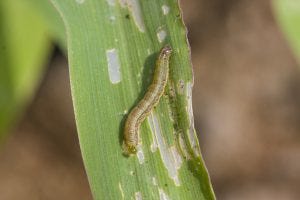Content Spotlight
Podcast: MilliporeSigma says education vital to creating unbreakable chain for sustainability
MilliporeSigma discusses the importance of people, education, and the benefits of embracing discomfort to bolster sustainability efforts.

Insect-based expression systems remain effective in making gene therapies says Lonza as it launches a medium specifically to produce Adeno Associated Virus (AAV) in Spodoptera Frugiperda (Sf9) cells.
According to Lonza, the TheraPEAK SfAAV Medium is the first chemically defined, non-animal origin medium designed specifically for the production of AAV in Sf9 insect cells for gene therapy applications.
“This medium is chemically defined and we have compared its performance with four other media on the market currently. It allows for faster growth of Sf9 cells and more production of certain AAV serotypes then competitor media,” Jerome Jacques, senior scientist at Lonza Bioscience Solutions told this publication.

Image: iStock/kochievmv
According to Jacques, “Sf9 cells grow in suspension culture and in higher densities making them much easier to work with, and so allow for easier scalability of our customer’s processes.”
AAV has become one of the most more prominent viral vectors used to develop gene therapies. Insect cells are just one host scientists use to create AAV for gene therapies but have been proved successful through the launch of Glybera (alipogene tiparvovec), the first ever commercial gene therapy launched by UniQure in Europe in 2012.
“Until recently, Sf9 cells were one of the only cell lines for gene therapy that was possible to grow in suspension, allowing for better scalability,” said Jacques.
While progress is being made with other cell lines – for example producing AAV in suspension HEK293 – other biotechs continue to look to Sf9 to develop their therapies.
“Often it depends on the scientists and their past experience – if their past experience is working with Sf9 cells thy may be more inclined to continue working with this specific cell line.”
Sangamo Therapeutics, for example, uses a commercial scale baculovirus manufacturing platform to manufacture AAV vectors for genome editing and gene therapy, while Voyager Therapeutics – which works with CDMOs Brammer Bio (now Thermo Fisher) and Fujifilm Diosynth Biotechnologies – uses a baculovirus/Sf9 AAV production system.
There are four major steps in producing AAV vectors using insect cells, according to Jacques:
1) Cell expansion. Usually starts from a fresh vial of cells, thaw in cell culture medium and expand through several passages and different vessels to reach the right amount of cells and appropriate vessels size.
2) Viral vector production. When the appropriate vessel volume and cell density is reached, the Sf9 cells are co-infected with two Baculovirus: one Baculovirus containing the gene coding for the Rep/Cap of the AAV (Protein and enzyme necessary to create AAV) and the second Baculovirus containing the GOI (gene of interest) that will replace the defective one in the patient.
3) Purification of viral vector. After the production period (3-4 days) the cells and supernatant are harvested and the purification process is started. This part varies from customer to customer but could involve several steps to remove the cell debris and other chemicals.
4) Pooling and vialing. The different harvests of AAV are pooled before vialing and packaging for use.
You May Also Like